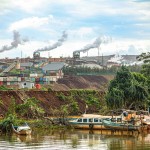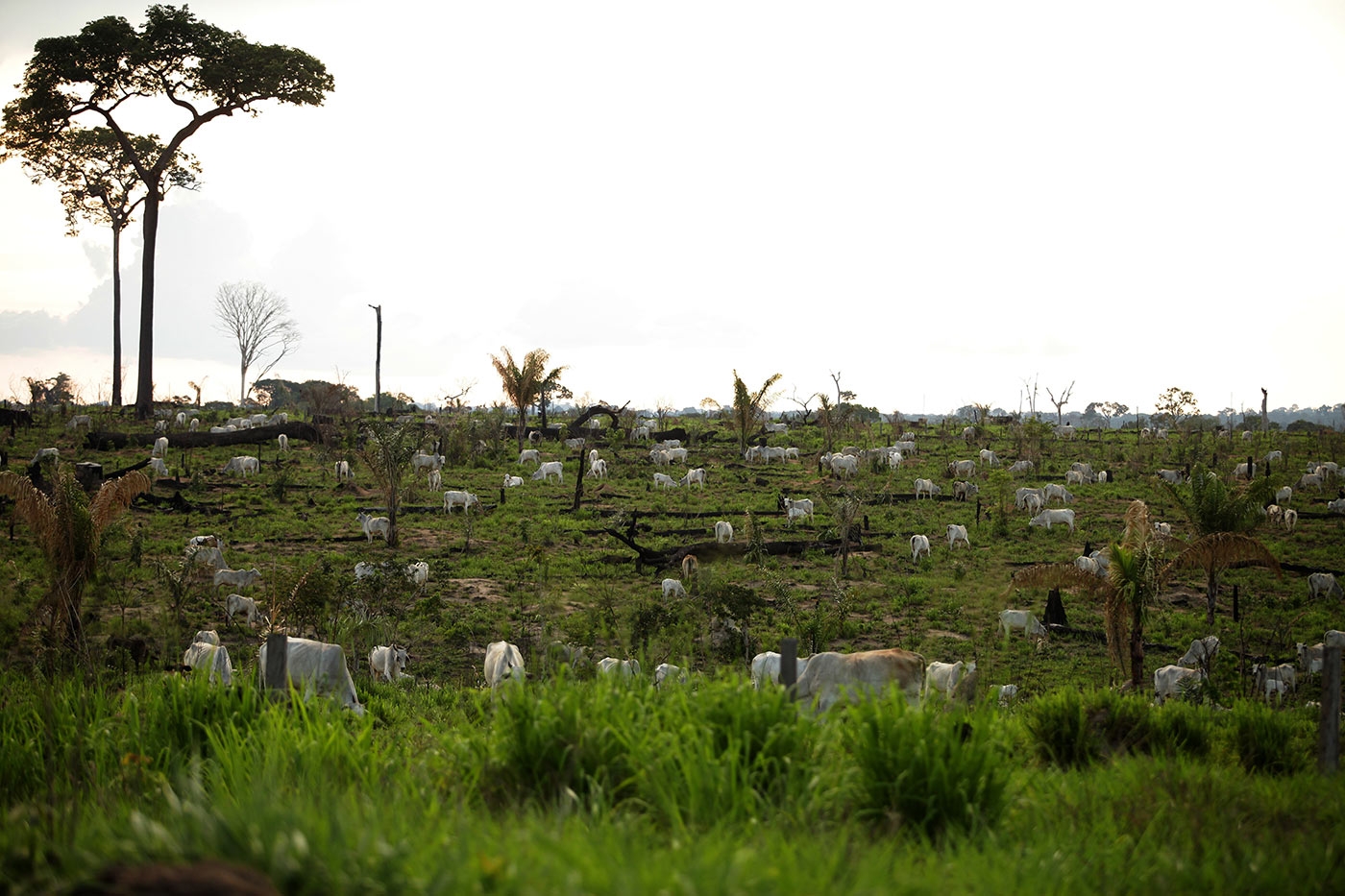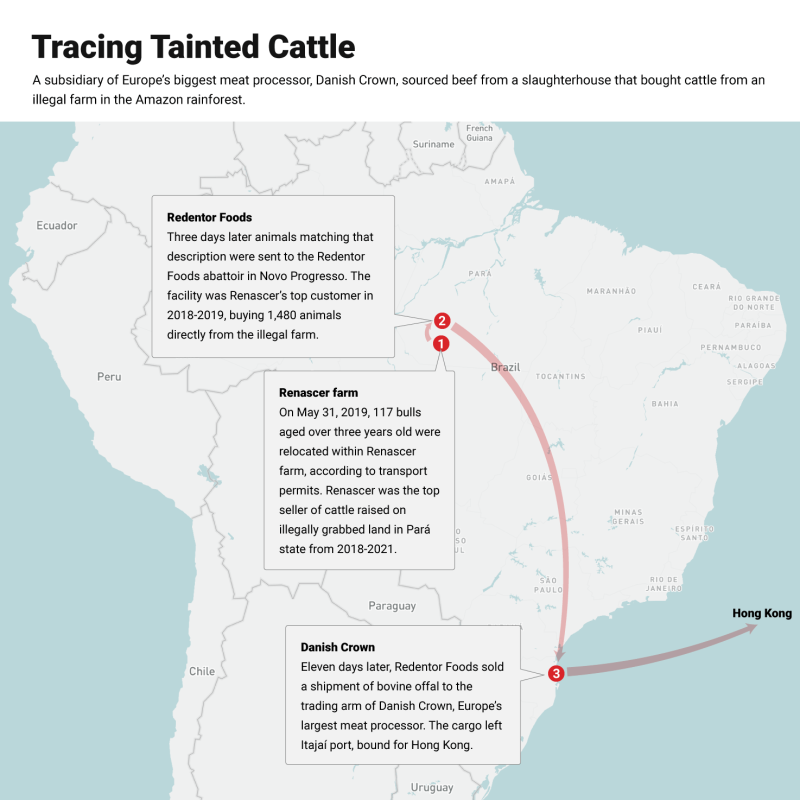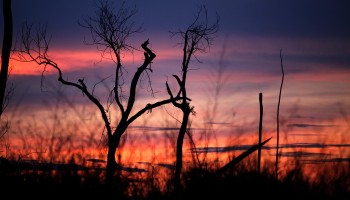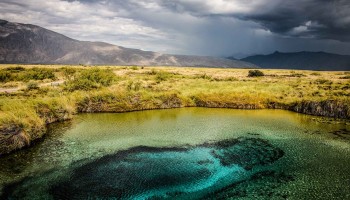The vast cattle pastures of the Baixão Verde farm cut like a brown scar through 700 hectares of protected Amazon rainforest in Brazil’s northern Pará state, the most deforested in all of the country.
On paper, the farm should not exist: In 2016, Brazil designated the area, known as Cachoeira Seca do Iriri, as an indigenous reserve. But the move has done little to stop farmers from deforesting vast swathes of its rainforest. In 2020, more land was cleared in Cachoeira Seca than in any other indigenous territory in the Amazon, according to Brazil’s space agency, which monitors deforestation.
Brazil’s Federal Public Ministry, which is similar to a public prosecutor’s office, has warned that the encroachment of land grabbers in Cachoeira Seca threatens the Arara indigenous people who live there. Mobu Odo Arara, a chief of one group, said that at one point tensions became so heated that he needed a police escort to travel the area.
“The farmers and loggers wanted to kill me,” he told Brazilian magazine piauí.
Because Baixão Verde is an illegal farm, cattle raised there should be barred from entering the international supply chain. But in 2018, transport permits show nearly 700 head left the ranch for 10 others, all of them outside the protected reserve. Between 2018 and 2021, eight of those farms sold close to 5,800 cattle to 23 slaughterhouses — including one owned by the second-largest beef processor in the world, Marfrig.
Baixão Verde wasn’t Marfrig’s only illicit source of cattle. Over the same period the facility received more than 12,200 head from suppliers who bought cattle from farms on protected land, transport permits showed. While it’s impossible to trace each animal, the data show how easily they were able to enter Marfrig’s supply chain, which stretches to nearly 100 countries.
This is just one example among many. From 2018 to late 2021, more than 91,200 cattle were moved from over 213,000 hectares of illegally acquired public lands in Pará state, an investigation by OCCRP, piauí, Fiquem Sabendo and the nonprofit Center for Climate Crime Analysis (CCCA) found. The vast majority of this livestock was sent to farms in legal areas and then sold on to 129 abattoirs around Brazil.
For instance, the world’s largest meat company, JBS — which supplies well-known chains like McDonalds and Carrefour — bought more than 21,000 cattle from facilities that sourced from illegal farms. A subsidiary of Europe’s biggest meat processor, Danish Crown, also bought beef that appears to have originated on a ranch in protected Pará rainforest.
Companies that have signed a non-deforestation agreement with Brazilian authorities, such as JBS and Marfrig, can be fined and prosecuted for buying cattle raised on grabbed land. Even a single animal from an illegal farm can “taint” an entire herd. Reporters found that 19 facilities in Pará that had signed the government pledge sourced more than 64,000 cattle from suppliers who bought animals from farms in protected areas between 2018 and 2021.
“When [a legal farm or slaughterhouse buys] livestock of illegal origin, you violate several laws,” said Daniel Azeredo, a prosecutor for the Federal Public Ministry. “You don't even need to be aware that the product is of illegal origin for you to be committing a crime.”
The Analysis
To show how cattle raised on illegal farms in Pará enter global supply chains, OCCRP, piauí, Fiquem Sabendo, and the Center for Climate Crime Analysis (CCCA) compared data on land holdings, indigenous territories and protected areas, and animal transport licenses.
Despite a slew of zero-deforestation pledges by Brazil’s meat industry, cattle ranching remains the main driver of deforestation in the Amazon. Experts say companies like JBS and Marfrig don’t do enough to check whether the farms they buy from have “laundered” cattle raised on illegal ranches.
“The slaughterhouse is not looking at where these cattle came from. There is no system that goes back to the origin of the cattle,” said Daniela Montalto, a campaigner at Greenpeace. “But if we can do the monitoring, companies with all the economic resources they have should be able to do it too.”
Marfrig said it does what it can to monitor its supply chain, and its slaughterhouse in Pará has now closed. “The complexity of livestock farming in Brazil is widely known and Marfrig has made every effort to ensure that 100 percent of its supply chain, including direct and indirect suppliers, are identified from the source,” the company said.
Domingos Bispo de Oliveira, the owner of the Baixão Verde farm and four others in the area, did not respond to requests for comment. This year, the farm's registration in an official land database, known as the CAR, was canceled by Pará’s state authorities because it overlaps with indigenous land.
JBS said it could not find records of the 21,000 animals connected to illicit farms that reporters had discovered, but pledged to “contact all of its direct suppliers mentioned [in this investigation], asking them to verify their supply chains.”
Danish Crown said its subsidiary has stopped working with the supplier that bought the illicit cattle.
Danish Crown’s Tainted Supply Chain
Down a winding 40-kilometer road leading deep into the Amazon rainforest sits a sprawling, 2,400-hectare ranch known as Renascer farm. When piauí visited in October 2021, cattle grazed near the entrance in wide pastures dotted with the stumps of felled trees.
From 2018 to 2021, the ranch sold more cattle than any other farm on illegally acquired land in Pará, according to CCCA’s analysis. About 4,770 animals left the property in those years, some headed to ranches outside protected areas that supplied slaughterhouses in Pará and the neighboring state of Mato Grosso.
Renascer is part of a much bigger problem. The ranch is located within the Jamanxim National Forest, a huge nature reserve created by former President Luiz Inácio Lula da Silva in 2006. Despite its protected status, over 41,000 cattle were sent out of illegal farms in the reserve in the three years analyzed by CCCA — nearly half the total identified in the investigation.
The man behind Renascer is Neivar Zorthea, a real-estate developer in southern Brazil. Neivar and his sister Angélica, a physical therapist, have claimed possession of three farms totaling more than 3,400 hectares in the Jamanxim reserve, entries in the CAR land register show.
Satellite imagery shows roughly a third of Renascer farm’s 2,400 hectares, outlined in white, were cleared between December 2004 and December 2020.
Six years ago, the Federal Public Ministry filed a civil action to expel Angélica Zorthea and seven other farmers from the Jamanxim reserve. But due to delays in Brazil’s often sluggish legal system, the case is still open.
Another of Angélica Zorthea’s farms, known as Bom Jesus, was cited in 2014 for illegally deforesting 76 hectares of rainforest. She was fined 380,000 Brazilian reais (just under $162,000 at the time) and temporarily banned from farming the deforested area.
Neivar Zorthea declined to comment for this story, and blocked a reporter who tried to ask him further questions on WhatsApp. A lawyer for Angélica Zorthea did not reply to requests for comment.
Renascer’s top customer appears to have been the Redentor Foods abattoir in the nearby town of Novo Progresso, which bought 1,480 animals directly from the illegal farm in 2018 and 2019. At the time, the slaughterhouse belonged to the Bihl family, several of whom have been accused of bribery and fraud in separate investigations.
By tracing a batch of 117 bulls over three years old — the age they are usually killed for beef — reporters were able to show how cattle from the illegally acquired farmland made their way into the supply chain of Europe’s largest meat processor. Transport permits show the bulls were moved between different parts of Renascer farm on May 31, 2019. Three days later, animals matching that description were transported to Redentor Foods for slaughter.
Eleven days after that, Redentor Foods sold a shipment of bovine offal to a company called ESS-Food, the trading arm of Danish Crown. Shipping data shows the cargo boarded a ship in Itajaí, in southern Brazil, bound for Hong Kong.
ESS-Food, which sells 400,000 tons of meat a year, has been called out for its lax checks before. In its 2019-2020 “sustainability report,” Danish Crown noted its subsidiary had been criticized for selling Brazilian meat “without a guarantee for its origin,” after an investigation by Reporter Brasil traced other suspect purchases from the Amazonia region.
Danish Crown told piauí that it had stopped working with Redentor Foods two years ago. “Since 2020 our procedures have been changed and that has led to the fact that ESS-Food has reduced its trading with certain companies in Brazil,” a spokesperson said in an email.
Giovan Santos, sustainability manager at Grupo Bihl, which owned Redentor Foods at the time but apparently sold it in 2020, said the company has strict control over its livestock suppliers. “We dismissed many producers in [Pará state] because of these land problems. But one or the other case can go unnoticed,” he said.
“A Problem That Must Be Addressed”
Brazil’s largest meat processors, JBS, Minerva, and Marfrig, first pledged to stop buying livestock from deforested and grabbed land after Greenpeace published a landmark report in 2009 exposing violations in the cattle supply chain. By the end of the following year, all three had signed an agreement with the Federal Public Ministry, though it only covered particular states.
Over a decade later, livestock ranching is still the main driver of large-scale Amazon deforestation. The environmental nonprofit Imazon estimates that 90 percent of areas cleared in the rainforest are now pasture.
President Jair Bolsonaro’s government is accused of enabling this rampant deforestation, including by proposing plans to allow cattle ranching on protected indigenous lands and backing huge agricultural projects in the Amazon. Deforestation has surged since he took power in 2018, reaching its highest rate for 15 years in 2020-21.
How to Destroy the Amazon Rainforest
In 2016, inspectors from the Institute for the Environment and Renewable Natural Resources (IBAMA), a state-run conservation agency, started examining the supply chains of 29 Pará farms that had been sanctioned for deforestation. Their investigation, known as Operation Carne Fria, found 24 of them had together supplied nearly 59,000 animals to 14 slaughterhouses and one live cattle exporter in Pará, Tocantins, and Bahia states between 2013 and 2016.
IBAMA suspended the operations of all 14 slaughterhouses the next year and fined them 294 million reais ($92.1 million). JBS, which owned two of the 14, was due to pay 24.7 million ($7.7 million), though the company denied any wrongdoing.
But a few days after the launch of the second phase of Operation Carne Fria, in March 2017, judges in Pará and Tocantins revoked part of the suspensions. All of the companies and ranchers fined in the case have appealed. So far, none of the fines have been paid, according to official documents.
A recent annual audit by the Federal Public Ministry, known as a “Meat TAC” report, shows JBS is still not living up to its sustainability pledges. The most recent one, published last year, found a third of the cattle slaughtered by the company were “acquired with evidence of wrongdoing.” In response, the company committed to investing 5 million reais (about $905,000) in initiatives to improve the processes of tracking the cattle supply chain.
“This is a problem that has to be solved,” said Azeredo, the prosecutor. “Without solving this problem, no meatpacking plant can say that it does not have cattle [of illicit origin] in its production chain.”
One of the problematic farms in JBS’ supply chain may have been Santa Rita, in the national forest of Itacaiúnas in Pará’s southeast. Created in 1998 as a sanctuary for rare species, Itacaiúnas has been razed by prospectors in search of hardwoods and new areas for cattle ranching. Nearly 50 people have occupied land in the reserve, keeping more than 20,000 cattle.
Transport permits show that a truck took 54 steers, between two and three years old, from Santa Rita to another farm outside the sanctuary, known as Santa Cecília II, on August 28, 2019. Less than a week later, 18 animals matching that description were sent east to a JBS abattoir, followed by 36 more in September and October.
Luzimarque Veloso, who lays claim to the Santa Rita farm, declined to comment. “I don't usually talk about my business, even with acquaintances, let alone with strangers. Go hunt for information elsewhere,” he told a reporter.
JBS said it stopped buying cattle from the Santa Cecília II farm in 2020 — along with about 14,000 other cattle ranchers — due to environmental concerns. “JBS is committed to a sustainable beef chain in all biomes in which it operates,” the company said in a statement.
But CCCA’s analysis showed such violations of the “Meat TAC” agreement are common in Pará: 19 of the meatpacking plants in the state that had signed it bought just over 64,300 cattle from suppliers that sourced from illegally occupied areas between 2018 and 2021. A further 1,584 animals were bought directly from farms located on protected or indigenous lands.
One slaughterhouse, Masterboi, also signed the agreement during the period of analysis, in March 2018. Between 2018 and 2021, the company purchased nearly 7,900 cattle from 23 farms that source animals from illegal areas, and directly from one farm in an area that is in the process of becoming the Tuwa Apekuokawera indigenous reserve.
Masterboi said it was unaware that its suppliers had bought animals from illegal farms, but said it works with geomonitoring companies to monitor its supply chain. A spokesperson also denied that buying from the farm in the Tuwa Apekuokawera territory violated the government pledge as the area has not yet been officially demarcated as protected land.
Mairon Bastos Lima, an environmental researcher at the Stockholm Environment Institute, said companies use the TAC pledge to project a rule-abiding image while doing little to actually prevent deforestation and land grabbing.
“Certain companies that transgress are only interested in dialogue. Or rather, to be seen dialoguing,” Lima said.
He said that cross referencing information from different databases, similarly to the analysis carried out by CCCA, could allow investigators to draw connections that could help clean up supply chains. Still, Lima said he didn't expect any change without a broader political shift.
“If ranchers are making it difficult to access data that already exists, with technologies and procedures already in place, how can we expect them to adopt new practices? It will not happen, not under these conditions, without another [government] or new pressures.”
Additional reporting by Eduardo Goulart (OCCRP), Fiquem Sabendo, Silvio Melatti and Pan Pak Lam.



